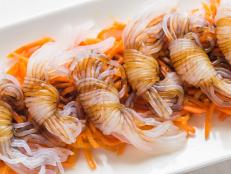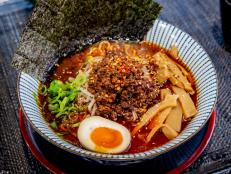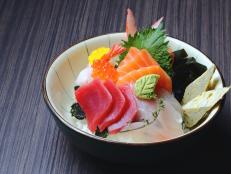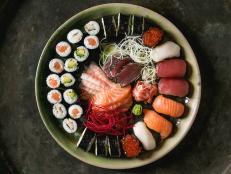How to Upgrade Instant Ramen, According to an Expert In Japanese Cuisine
8 ways to infuse your bowl with more flavor.
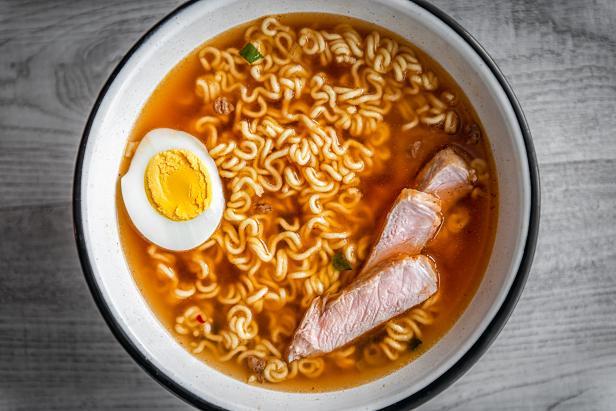
krblokhin/Getty Images
By Layla Khoury-Hanold for Food Network Kitchen
Layla Khoury-Hanold is a contributor at Food Network.
Instant ramen makes a satisfying snack or an easy, quick dinner, but that doesn’t mean there isn’t room for improvement. For ramen upgrade inspiration, we consulted Pascale Yamashita, a recipe developer, food stylist, food photographer and avid food lover based in Japan. Here are our best ways to gussy up instant ramen to make it more flavorful and filling.
1. Add Additional Spices
Think of instant ramen as a blank canvas, so experiment to find the seasonings and spices that appeal to your taste preferences and complement the flavor of instant ramen you have on hand.
- Ground White Pepper: Yamashita says that in Japan, ground white pepper is a popular spice to add to ramen. There are many different varieties and flavors of instant ramen available in Japan, such as seafood, curry, kimchi and Chinese chili. So, depending on the flavor and accompanying seasoning packet, additional spices might not be needed – use your discretion!
- Furikake: The seasoning blend that includes nori (dried seaweed) and sesame seeds is traditionally sprinkled over rice, but Yamashita says that it wouldn’t hurt to add it to ramen if you like those flavors.
2. Add Aromatics
- Scallions: According to Yamashita, people in Japan often top off ramen with scallions. “There is such a thing as scallion ramen, so it makes sense to us,” she says.
- Ginger or Garlic: Although adding garlic or ginger isn’t common in Japan, it’s an easy way to flavor the water as the noodles boil. For her Afternoon Ramen, Claire Thomas flavors her broth with ginger, garlic, green onions and leeks.
3. Change the Cooking Liquid
Japanese instant ramen contains seasoning packets that are either in liquid or powder form, both of which need to be mixed with water and boiled to make the broth. Depending on the flavor of ramen, the seasoning packet may already include ingredients to make a flavorful broth. Common instant ramen broth flavors that are available in Japan include pork bone, soy sauce, salty chicken and miso. Depending on the variety of instant ramen, you can play with different types of broths and seasonings to impart extra flavor.
- Try boiling noodles in low-sodium chicken broth
- Add a splash of warmed bone broth at the end
- Mix in miso paste whisked in warm water
4. Finish It with Sauce
Depending on the flavor profile of the instant ramen, you may not need to add additional sauces such as the below. In Japan, Yamashita says that chili oil, chili crisp, Tabasco and sriracha are popular spicy ramen sauces.
- Soy sauce
- Chili crisp
- Chili oil
- Tabasco and sriracha
- Oyster Sauce
- Hoisin
- Fish Sauce
- Sambal
- Gochujung
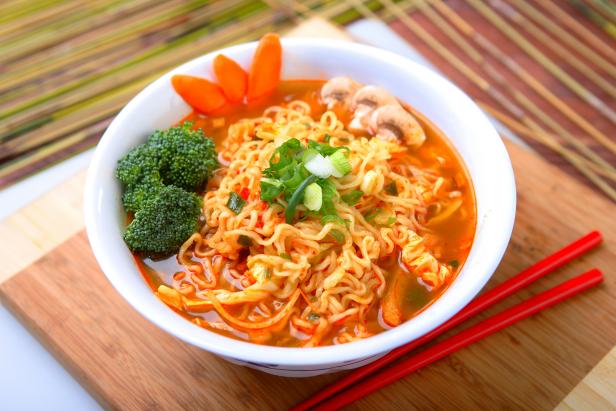
whitewish/Getty Images
5. Add Vegetables
“We often stir fry cabbage, carrot and bean sprouts in salt and pepper and have it over ramen,” Yamashita says. She adds that any kind of leftover veggies work as a ramen topping.
- Finely chopped raw or stir-fried vegetables: Julienne carrots or bell peppers, shred cabbage, tear spinach leaves or finely dice mushrooms, and either add them raw or give hardier vegetables a quick stir-fry.
- Leftover roasted vegetables: Sweet potato, squash, eggplant or broccoli also add heft and nutrients.
- Thawed frozen vegetables: Broccoli florets, peas, corn kernels or shelled edamame work well.
- Pickled components: These are a popular ramen topping in Japan, including kimchi or pickled baby bamboo shoots.
6. Add an Egg to It
Eggs are a common addition to ramen in Japan, including a sunny-side up fried egg or soft- or hard-boiled eggs. “Some people crack an egg into the broth while the ramen cooks. And some people just crack a raw egg open into the bowl of ramen at the end.” Yamashita likes to add just a raw egg yolk to a bowl of prepared ramen. For a restaurant-worthy ramen upgrade , plan ahead and make home-made ramen eggs (soft-boiled eggs marinated in a sweetened soy-sauce-based mixture).
How to Make Ramen Eggs (Ajitama)
All you need is six ingredients, including the eggs.
7. Beef It Up with Protein
In Japan, some instant ramen comes with additional toppings sealed in an air-tight package, such as char siu (Chinese barbecue pork). Yamashita says that any kind of meat or plant-based protein works as a ramen topping. “Preferably soy sauce braised meat if one has some at home. Sometimes ham, too. As for tofu, we would pan fry the tofu, but we don’t use regular soft tofu for ramen.” Think of your bowl of ramen as another opportunity to use up leftovers such as:
- Baked or pan-fried tofu
- Crumbled tempeh
- Shredded rotisserie chicken
- Leftover sauteed ground pork or turkey, or cooked shrimp
8. Other Ways to Use Instant Ramen
Instant ramen is a versatile ingredient that goes way beyond noodle soup. Try making a crunchy Broccoli-Ramen Slaw with uncooked ramen noodles, or use cooked noodles to make a Shortcut Dan-Dan Noodles or fold them into eggs to make a Ramen Frittata.
Related Links:

























